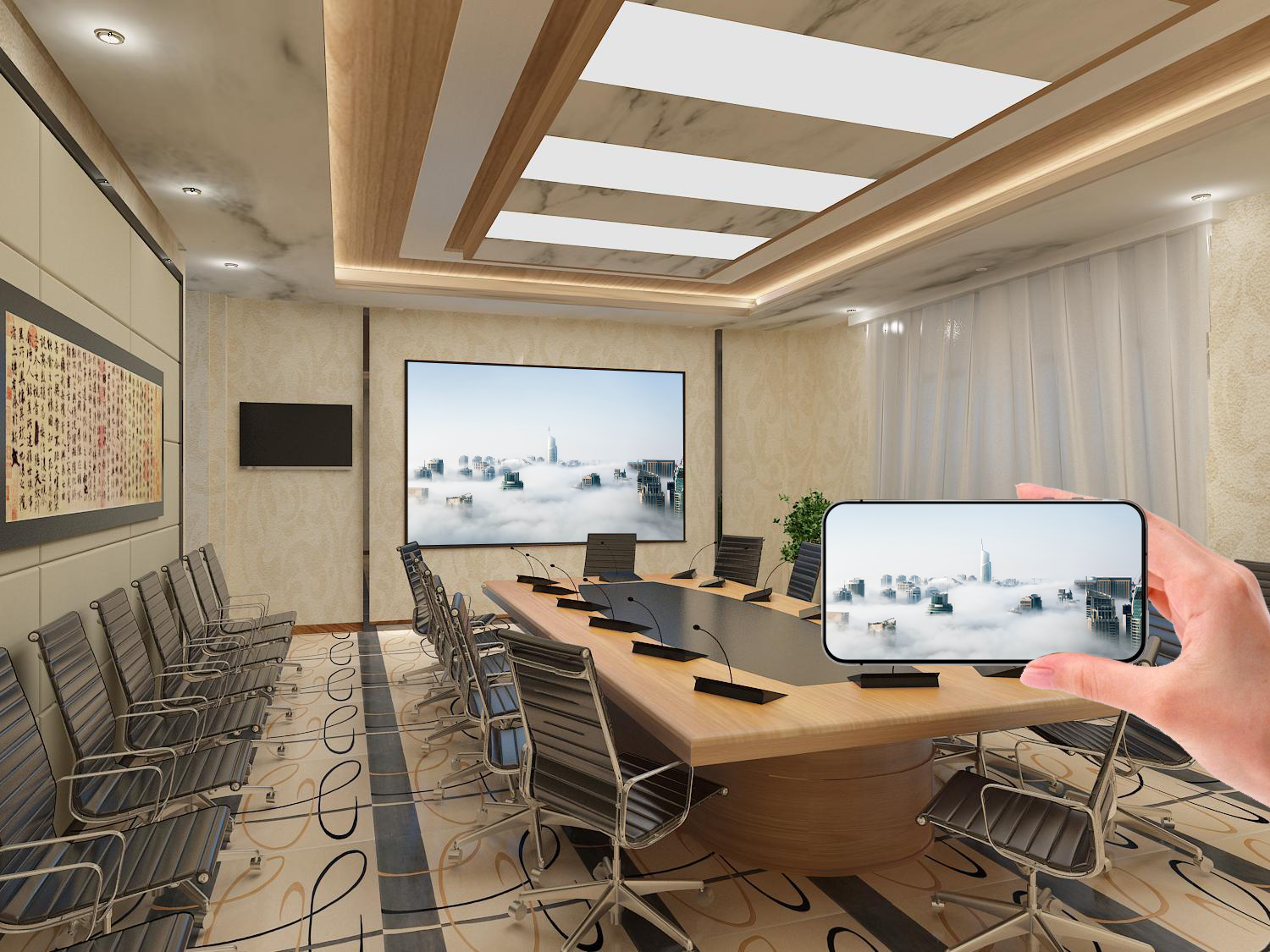How Mobile Screen Mirroring and Multi-Screen Collaboration Empower Enterprises? Unveiling Four High-Efficiency Application Scenarios
Smartphones have become an extension of our bodies and powerful personal computing hubs. How to seamlessly integrate the capabilities of mobile phones into team collaboration? Mobile screen mirroring and multi-screen collaboration technologies provide the perfect answer. They are quietly transforming enterprise operation models in the following scenarios.
I. Scenario 1: Agile Meetings, Say Goodbye to “Cable Restrictions”
Pain Point: Before traditional meetings start, someone is always busy looking for adapters, plugging in cables, and adjusting projectors—wasting valuable time.Solution: Deploy meeting tablets that support wireless screen mirroring. After entering the meeting room, participants can mirror their mobile phones or computers with one click, instantly sharing plans and data with everyone. Combined with built-in video conferencing ROOMS, remote colleagues can seamlessly join discussions, realizing true multi-screen collaboration and doubling meeting efficiency.
II. Scenario 2: Cross-Regional Training, Seamless Knowledge Transfer
Pain Point: Enterprise training is limited by geography—headquarters trainers cannot cover all branches, leading to inconsistent training effects.Solution: Deploy a multi-screen collaboration system with RTSP streaming recording integration in the headquarters training room. When trainers teach on-site, their images, voices, and courseware shared via mobile screen mirroring can be recorded in real time and live-streamed to employees in various locations. Off-site employees can also ask questions or share local scenarios via mobile screen mirroring, forming two-way interaction and breaking geographical barriers.
III. Scenario 3: Dynamic Client Presentations, Enhancing Professional Image
Pain Point: When presenting plans to clients, traditional projectors cause color distortion, and speakers are confined to the podium.Solution: In exhibition halls or negotiation rooms, sales staff use wireless screen mirroring to move freely with tablets or mobile phones, dynamically demonstrating product models and client case videos. When clients are interested in a specific detail, the staff can zoom in and annotate instantly. The entire process is smooth and natural, greatly enhancing professionalism and interactivity to facilitate deal closure.
IV. Scenario 4: Emergency Command Centers, Real-Time Information Synchronization
Pain Point: In emergency command scenarios, information sources are diverse (surveillance videos, drone footage, mobile phone recordings), requiring rapid aggregation and decision-making.Solution: The large screen in the command center serves as the multi-screen collaboration hub, capable of accessing multiple information sources simultaneously. Frontline personnel real-time transmit on-site footage via mobile screen mirroring, while the command center retrieves RTSP streams from the surveillance platform. All key information is displayed on the large screen, enabling commanders to quickly assess situations and make decisions, and instructions can be instantly sent to all terminals.
Mobile screen mirroring and multi-screen collaboration technologies are no longer “nice-to-have” additions, but core tools in enterprise digital transformation. By simplifying connections, enhancing interaction, and extending value, they play an irreplaceable role in various business scenarios, bringing tangible cost reduction and efficiency improvement to enterprises.
